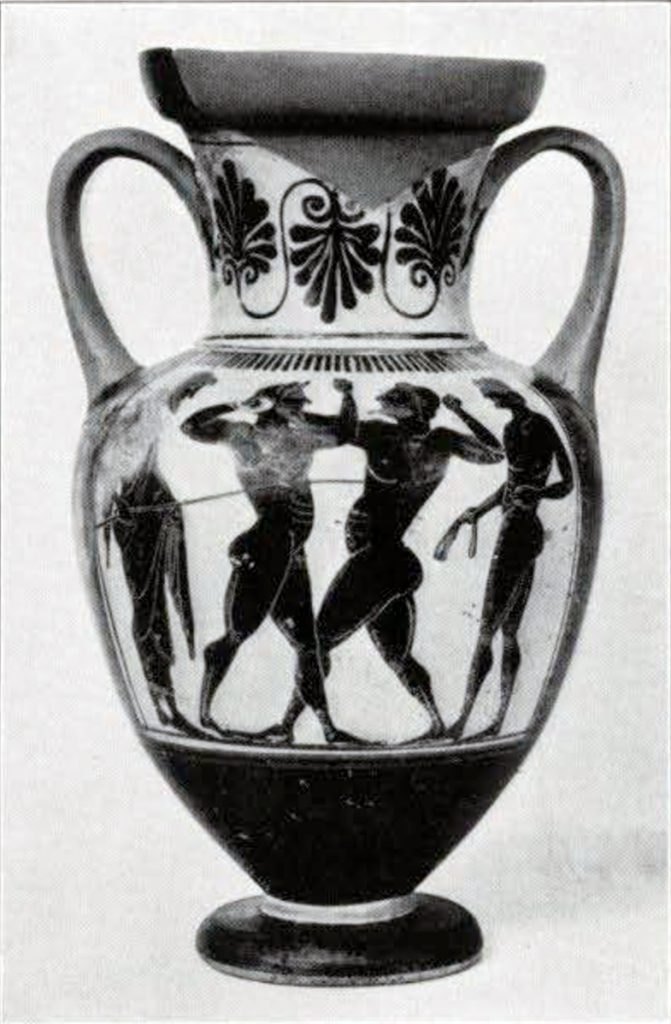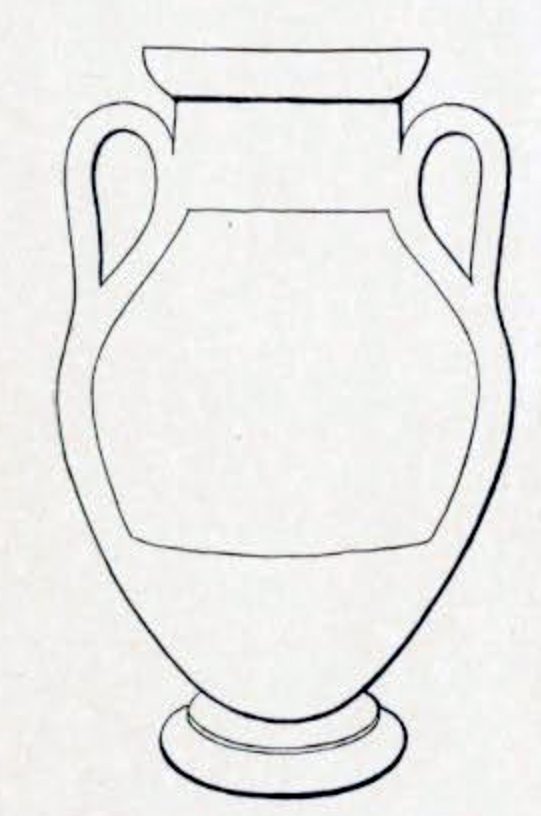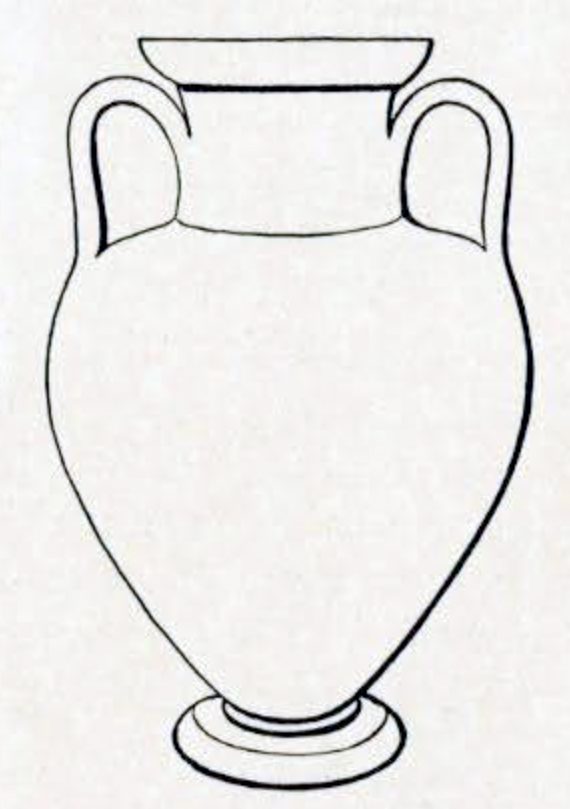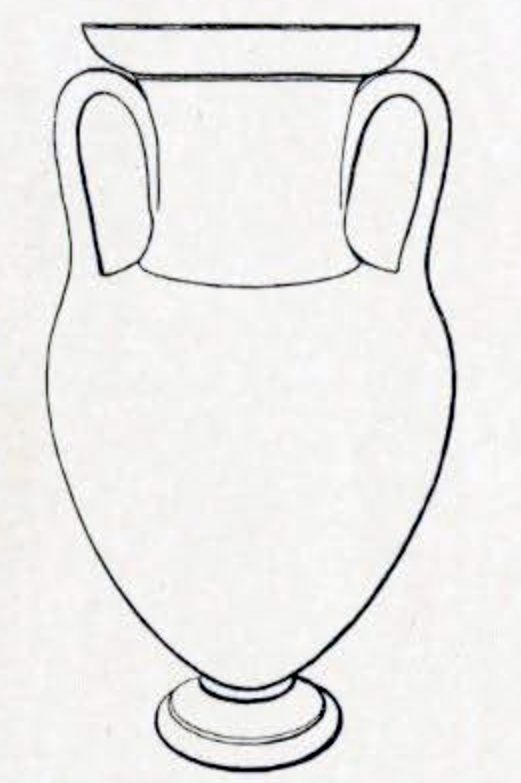In 1896 the Museum obtained a small group of Greek vases, which are said to have come from the Greek Islands, especially Chios and Samos, are in their way among the most interesting possessions of the Mediterranean Section of the Museum. The amphora which I wish to describe in this article (Figs. 89 and 90) is one of this group.

Museum Object Number: MS403
Image Number: 2719
The shape of the vase is interesting. It has the neck sharply divided from the body and the designs in panels on each side. This is rather unusual, as the amphora with designs in panels are usually of an entirely different shape, with the neck running into the body (Fig. 91). A vase of this shape would usually at this time, that is, in the end of the sixth century B. C., be left completely in the color of the clay and have designs in black figures on the red body. This would be called a red-bodied amphora (Fig. 92). Now the amphora shown in Figs. 89 and 90 has the decorative scheme of a panel amphora, and is in shape a modified form of the red-bodied amphora. But the red-bodied amphora is not, as a rule, so slender; it is larger and the neck is not so large in proportion to the body as in this vase. This vase is in shape much more closely related to the characteristic form of the following period, when the designs were in red figures on a black ground, which begins in the next century, and which has been supposed to be peculiar to that period—the form known as the “Nolan” amphora, from the fact that they were first found in Nola, in Southern Italy. There are no examples of “Nolan” amphora in the Museum, but there is one at Memorial Hall, of which I give an outline (Fig. 93).
Another important feature of the vase (Figs. 89 and 90) is the decoration of the neck, with its three palmettes, of which the central one points downwards. The writer has been engaged for some time in making a study of the vases of this shape in the black-figured technique, which he hopes to publish soon. The conclusion which he has reached is that the vases of this shape can be divided into two classes, according to the way the central palmette points, one of which is considerably earlier than the other in date. Of the first class, which dates from the middle of the black-figured period, a good many of the vases seem to be by the same hand; of the second, which seems to be contemporaneous with the early red-figured vases, nearly all can be positively attributed to one master.

Museum Object Number: MS403
Image Number: 2720
This vase is one of the earlier group, as can be seen from the style of workmanship, which is the characteristic manner of the middle of the black-figured technique. Like the vases of this group, it has the center palmette pointing downward. Its height of 29.3 centimeters is also the average height of the vases of this group, the vases of the later group being on an average considerably smaller, seldom more than 23 centimeters high.
In its general scheme of design this vase, with its athletic subjects (boxing and throwing the discus), recalls a vase in the British Museum of this class, No. BI88, which substitutes musical for athletic contests. There is also an amphora in the Louvre which shows musical contests. It is to the artist of these two vases that we should probably attribute this amphora. Other vases of this shape and class that seem to be by the artist of this vase are in Athens, Leyden and Naples, besides others in the Louvre and the British Museum. Though not an important specimen, this vase is of interest for two reasons. In the first place, it is of interest because, as I have hinted, it is possible to see the same hand at work in the collections of other museums. In the second place, this shape interests the writer because he believes it to be the direct prototype of the “Nolan” amphora shape of the red-figured period; for it is almost the identical shape, as a glance at the illustrations will show. Mr. H. B. Walters, whose “History of Ancient Pottery,” published in 1905, still remains the best book in English on the subject of Greek vases, says that the prototype of the “Nolan” amphorae is to be found in the red-bodied amphora shape of the black-figured technique (Fig. 92); but there is no need of going so far afield when in this class of black-figured vases we have almost the identical shape.
As has been said before, this is only a brief résumé of a more elaborate study that the writer has been making of the vases of this shape, and which he hopes to publish elsewhere soon. He could not resist writing a brief account of this vase in the Museum as an introduction to the article to appear later.
S. B. L.




